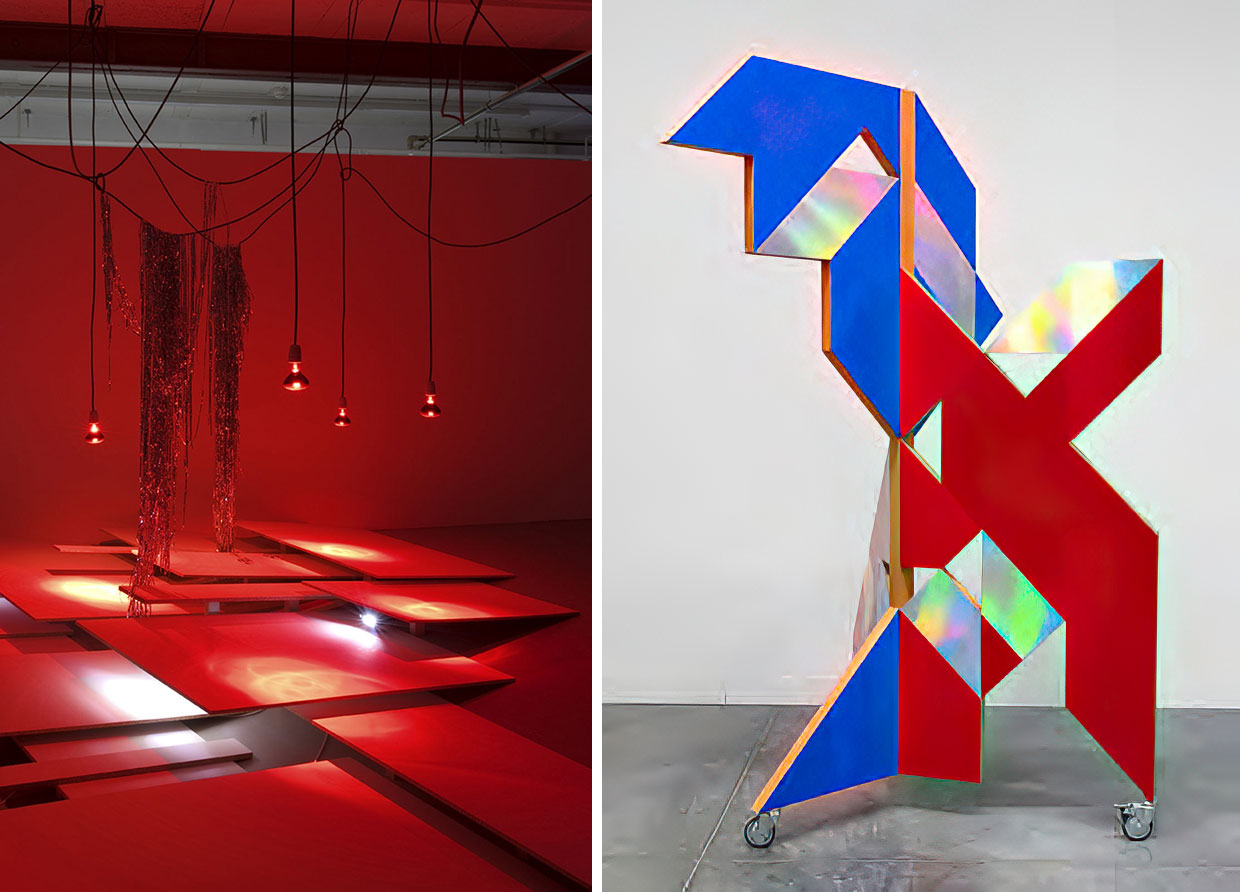ART-PRESENTATION: Haegue Yang-Emergence
 A leading artist of her generation, Haegue Yang is celebrated for her prolific and diverse work that evokes historical and contemporary narratives of migration, displacement and cross-cultural translation. For over two decades, Yang has been transforming how we experience everyday domestic materials, turning items such as venetian blinds, light bulbs, drying racks, knitting yarn and bells into meticulously constructed installations and sculptures.
A leading artist of her generation, Haegue Yang is celebrated for her prolific and diverse work that evokes historical and contemporary narratives of migration, displacement and cross-cultural translation. For over two decades, Yang has been transforming how we experience everyday domestic materials, turning items such as venetian blinds, light bulbs, drying racks, knitting yarn and bells into meticulously constructed installations and sculptures.
By Efi Michalarou
Photo: Art Gallery of Ontario Archive
“Emergence” is the title of the first North American survey exhibition of Haegue Yang, in addition to the 82 works featured in the exhibition, the Art Gallery of Ontario (AGO) has commissioned two new works by the artist. “Woven Currents – Confluence of Parallels” (2020) is a large-scale installation composed of venetian blinds and LED tubes, inspired by the layered architectural history of the space. The installation exposes the layered architecture of the AGO and makes its intricate history visible. The genesis for this work was the Two Row Wampum Treaty of 1613, a belt made from wampum shells that I learned about while at the AGO. The belt is an agreement between the Five Nations of the Iroquois (Haudenosaunee) and the Dutch government, as the artist says “I was struck by how powerful this treaty is, so unlike legal documents we are accustomed to, and how an object can clearly convey a lasting message about the values, hopes, and beliefs of those who created it. These thoughts led me to connect the parallel lines of the wampum belt, which maps a trajectory for two very different peoples, to the linear structure of venetian blinds. “Tectonic Undulations – A Fugue for the Great Wilderness” (2020), a new wallpaper designed by Yang and American artist and book designer Conny Purtill, will go on view later this year in the AGO’s South Entrance. The exhibition includes a full spectrum of the artist’s installations, sculptures and two-dimensional works. Among them is the reconstruction of the “Anthology of Haegue Archives” (1998), the artist’s attempt at self-historicization through the presentation of a group of early works in a museological display case. Also included is the groundbreaking series of sculptures “Non-Indépliables” (2006-10) where drying racks wrapped in fabric, yarn and light fixtures take on anthropomorphic qualities. Yang’s interests in domestic spaces as sites of reflection and planning of life are fully manifested in “Sallim” (2009), a critically acclaimed sculptural environment based on the artist’s Berlin kitchen at the time. The selection also includes “Boxing Ballet” (2013-15), a theatrical staging of human-sized figures covered in brass bells. The work offers Yang’s translation of Oskar Schlemmmer’s “Triadic Ballet” (1922), transforming the historical lineage of time-based performance into spatial, sculptural and sensorial abstraction. Through elements of movement and sound, Yang develops an installation with a relationship to the Western Avant-Garde, investigating their understanding in the human body, movement and figuration. Yang’s interest in movement is further emphasized in the series “Sol LeWitt Vehicles” (2018), and these moveable sculptures on casters will be activated throughout the run of the exhibition. The works are bsed on a cubic structure by the Minimalist artist Sol LeWitt, which Yang not only physically expands, but also conceptually condenses, doubles, mirrors, and finally turns upside down. They are presented against the wall mural “Eclectic Totemic” (2013), which references the diversity of sources and influences that have shaped Yang’s work.
Info: Curator: Adelina Vlas, Art Gallery of Ontario (AGO), 317 Dundas Street West, Toronto, Duration: 1/10/20-31/1/21, Days & Hours: Thu-Sun 10:30-17:00, https://ago.ca


Right: Haegue Yang, Reflected Red-Blue Cubist Dancing Mask, 2018. Wood, stainless steel, handles, casters, self-adhesive diamond reflective and holographic vinyl film. 186 x 118 x 107 cm. Courtesy of Greene Naftali, New York. Photo: Julien Gremaud, © Haegue Yang



